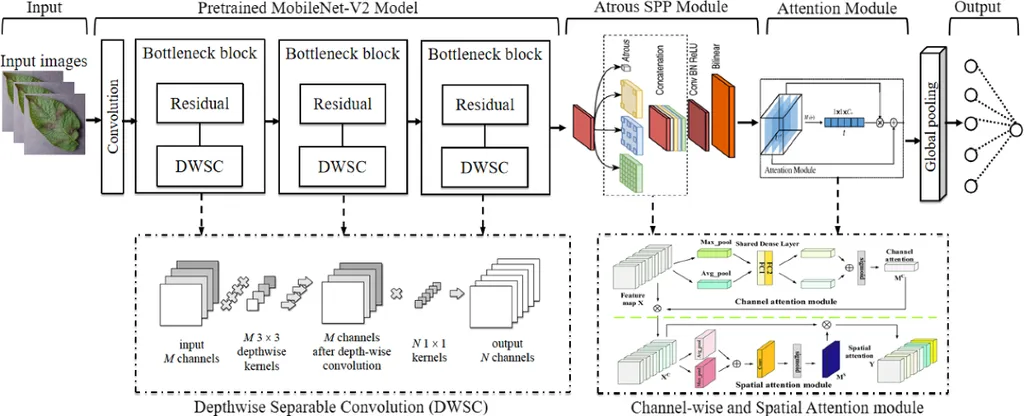In the heart of China’s Jilin province, researchers are making strides in the field of precision agriculture, with implications that could ripple through the global food security landscape. Ke Xie, a lead author from the College of Information Technology at Jilin Normal University, has developed a novel deep learning framework that promises to revolutionize potato disease detection. The research, published in the journal *Applied Sciences* (translated as *Applied Sciences*), is a beacon of hope for farmers and agritech enthusiasts alike, offering a robust solution to a longstanding agricultural challenge.
Potato leaf diseases pose a significant threat to agricultural productivity and global food security. Traditional manual diagnosis methods are not only time-consuming but also prone to human error. Existing automated approaches, while promising, often fall short due to insufficient feature extraction and poor generalization under complex field conditions. Xie’s research addresses these limitations head-on with the development of the ResNet18-SAWF model, a sophisticated integration of a self-attention mechanism with a multi-scale feature-fusion strategy within the ResNet18 framework.
The self-attention module is designed to enhance the extraction of key features, including leaf color, texture, and disease spots. As Xie explains, “The self-attention mechanism allows the model to focus on the most relevant parts of the image, much like how a human expert would scrutinize a leaf for signs of disease.” This targeted approach significantly improves the accuracy of disease detection.
Moreover, the feature-fusion module improves the holistic representation of multi-leaf structures under complex backgrounds. This is particularly crucial in real-world farming conditions, where leaves are often intertwined and the background is far from uniform. The model’s ability to handle these complexities sets it apart from existing solutions.
The experimental evaluation of the ResNet18-SAWF model was conducted using a comprehensive dataset comprising both simple and complex background conditions. The results were impressive, with the model achieving an accuracy of 98.36% on multi-leaf images with complex backgrounds. This performance outperformed baseline models such as ResNet18, EfficientNet-B0, and MobileNet_V2 by significant margins.
The implications of this research are far-reaching. For farmers, the ResNet18-SAWF model offers a practical solution for early and accurate detection of potato diseases, enabling timely intervention and potentially saving entire crops. For the agritech industry, it opens up new avenues for developing advanced diagnostic tools that can be deployed in real field environments.
As we look to the future, the success of the ResNet18-SAWF model underscores the potential of deep learning in precision agriculture. It is a testament to the power of integrating advanced technologies to solve real-world problems. As Xie puts it, “This research is just the beginning. The principles we’ve demonstrated can be extended to other crops and diseases, paving the way for a new era of smart farming.”
In an era where food security is increasingly under threat from climate change and population growth, innovations like the ResNet18-SAWF model are not just welcome but essential. They represent a step forward in our collective effort to build a more resilient and sustainable agricultural system. The research published in *Applied Sciences* is a shining example of how technology can be harnessed to address some of the most pressing challenges in agriculture.

